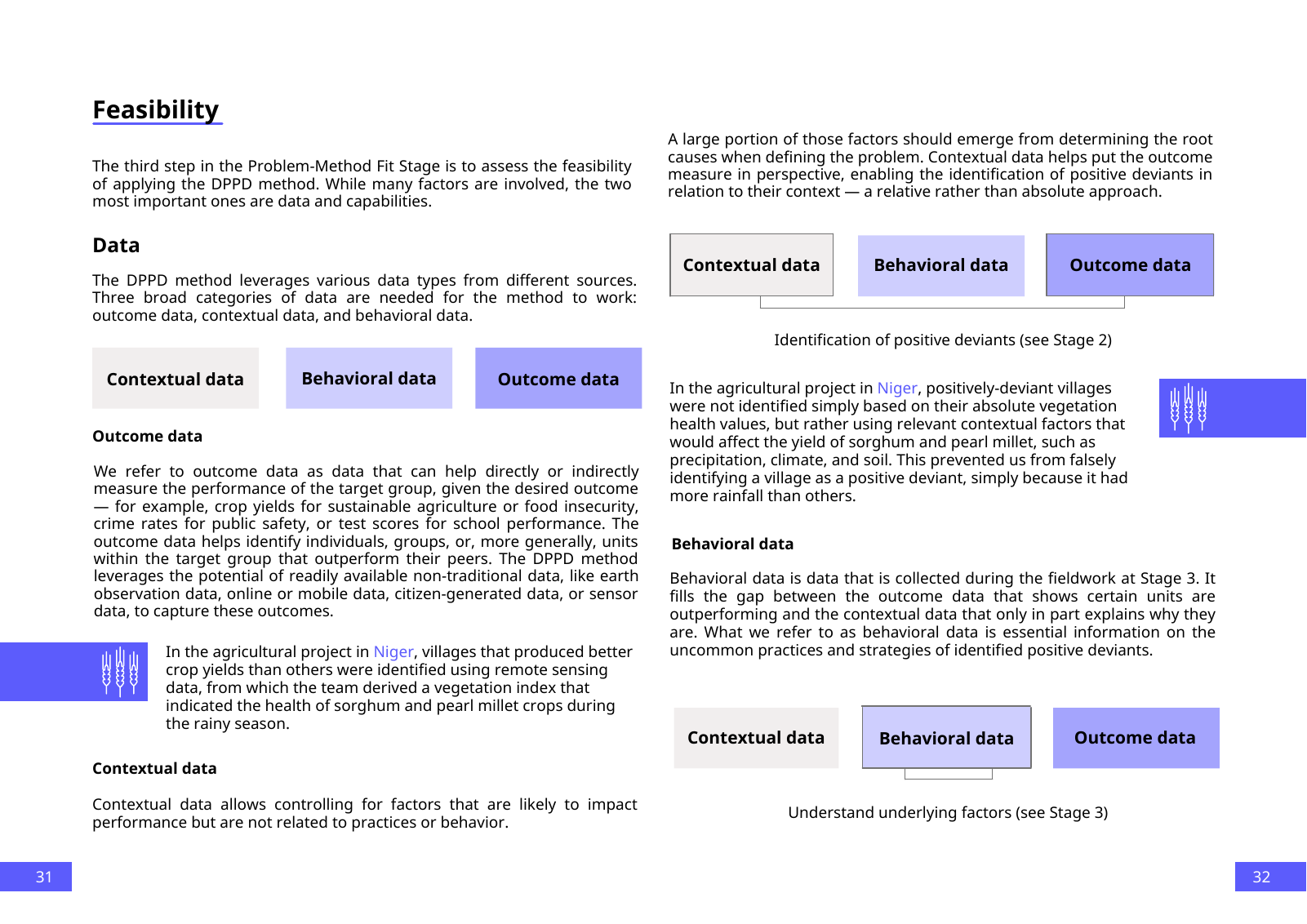Feasibility The third step in the Problem Method Fit Stage is to assess the feasibility of applying the DPPD method While many factors are involved the two most important ones are data and capabilities Data The DPPD method leverages various data types from different sources Three broad categories of data are needed for the method to work outcome data contextual data and behavioral data Outcome dataBehavioral dataContextual data Outcome data We refer to outcome data as data that can help directly or indirectly measure the performance of the target group given the desired outcome for example crop yields for sustainable agriculture or food insecurity crime rates for public safety or test scores for school performance The outcome data helps identify individuals groups or more generally units within the target group that outperform their peers The DPPD method leverages the potential of readily available non traditional data like earth observation data online or mobile data citizen generated data or sensor data to capture these outcomes In the agricultural project in Niger villages that produced better crop yields than others were identified using remote sensing data from which the team derived a vegetation index that indicated the health of sorghum and pearl millet crops during the rainy season Outcome dataBehavioral dataContextual data Identification of positive deviants see Stage 2 Contextual data A large portion of those factors should emerge from determining the root causes when defining the problem Contextual data helps put the outcome measure in perspective enabling the identification of positive deviants in relation to their context a relative rather than absolute approach In the agricultural project in Niger positively deviant villages were not identified simply based on their absolute vegetation health values but rather using relevant contextual factors that would affect the yield of sorghum and pearl millet such as precipitation climate and soil This prevented us from falsely identifying a village as a positive deviant simply because it had more rainfall than others Outcome dataBehavioral dataContextual data Understand underlying factors see Stage 3 Behavioral data Behavioral data is data that is collected during the fieldwork at Stage 3 It fills the gap between the outcome data that shows certain units are outperforming and the contextual data that only in part explains why they are What we refer to as behavioral data is essential information on the uncommon practices and strategies of identified positive deviants Contextual data allows controlling for factors that are likely to impact performance but are not related to practices or behavior 31 32

Hinweis: Dies ist eine maschinenlesbare No-Flash Ansicht.
Klicken Sie hier um zur Online-Version zu gelangen.
Klicken Sie hier um zur Online-Version zu gelangen.